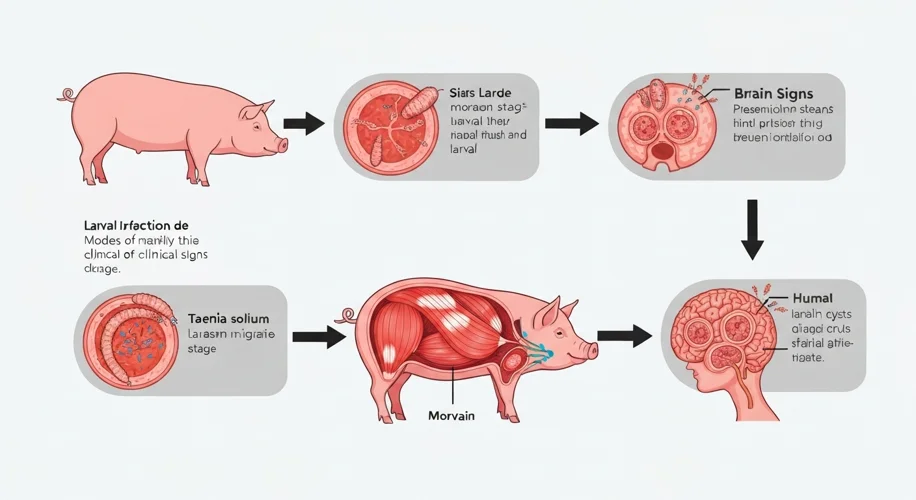The Fascinating Biology of Brainworms: What RFK Jr.’s Diagnosis Could Teach Us
Today, I want to talk about something that sounds like it belongs in a science fiction movie, but is a very real, albeit rare, medical condition: neurocysticercosis. You might have heard this term linked to a recent diagnosis. While I’m not here to discuss any specific individual or political matter, this situation presents a unique opportunity to explore the fascinating biology behind this condition and what it can teach us about public health, sanitation, and even the environment we live in.
What Exactly Are ‘Brainworms’?
The term “brainworm” is a bit of a catch-all, but in this context, it often refers to the larval cysts of the pork tapeworm, Taenia solium. This is a parasite that primarily infects pigs, but humans can also become infected. The life cycle of Taenia solium is quite complex and, frankly, a little unsettling.
Here’s a simplified breakdown:
- Infection in Pigs: Pigs get infected by eating eggs passed in the feces of infected humans. When these eggs are ingested, they hatch into larvae.
- Larvae Migrate: These larvae then migrate through the pig’s body, often encysting in muscle tissue. This is what we commonly call “cysticerci.” It’s these cysticerci that can be found in undercooked pork.
- Human Infection (Dietary): When humans eat undercooked pork containing these cysticerci, the larvae mature into adult tapeworms in the small intestine. The adult tapeworm can grow quite long and live for years, shedding eggs in the human host’s feces.
- Human Infection (Accidental/Environment): This is where things get serious and relate to neurocysticercosis. If a human ingests the eggs of the Taenia solium tapeworm (not the larvae in meat), typically through contaminated food, water, or surfaces, the eggs hatch in the human gut. The larvae then migrate from the intestines into the bloodstream and can travel to various tissues, including the muscles, eyes, and, critically, the brain and spinal cord.
Neurocysticercosis: When Larvae Invade the Brain
When these Taenia solium larvae (called cysticerci) settle in the brain, it’s known as neurocysticercosis. These developing cysts can cause inflammation and damage to brain tissue. The symptoms can vary widely depending on the location and number of cysts, and can include headaches, seizures, confusion, and neurological deficits. It’s a serious condition that, in severe cases, can be life-threatening.
Why is This a Public Health Issue?
Neurocysticercosis is a significant public health problem, particularly in parts of the world with poor sanitation and where raw or undercooked pork is consumed. However, it’s not confined to those regions. Travel and migration mean it can appear anywhere.
Did you know that cysticercosis is considered one of the most common causes of acquired epilepsy worldwide? This highlights how seemingly small biological processes can have massive public health implications.
Debunking Myths and Understanding Risk
There are many misconceptions about this condition. It’s important to remember:
- It’s not about eating pork directly, but about hygiene: The most common way to get neurocysticercosis is by ingesting the tapeworm eggs, which come from human feces. This often happens when someone with an adult tapeworm in their intestine contaminates food or water, or doesn’t wash their hands properly after using the restroom.
- Environmental factors matter: Access to clean water and proper sanitation are crucial in preventing the spread of the Taenia solium eggs. When these basic infrastructure needs aren’t met, the risk increases.
- It’s treatable, but prevention is key: Medical professionals can manage neurocysticercosis, but the focus should always be on preventing infection in the first place through good hygiene and safe food practices.
Understanding the life cycle of parasites like Taenia solium helps us appreciate the intricate connections between human health, animal health, and our environment. It’s a reminder that sometimes, the most complex health challenges have roots in very basic, everyday practices.

